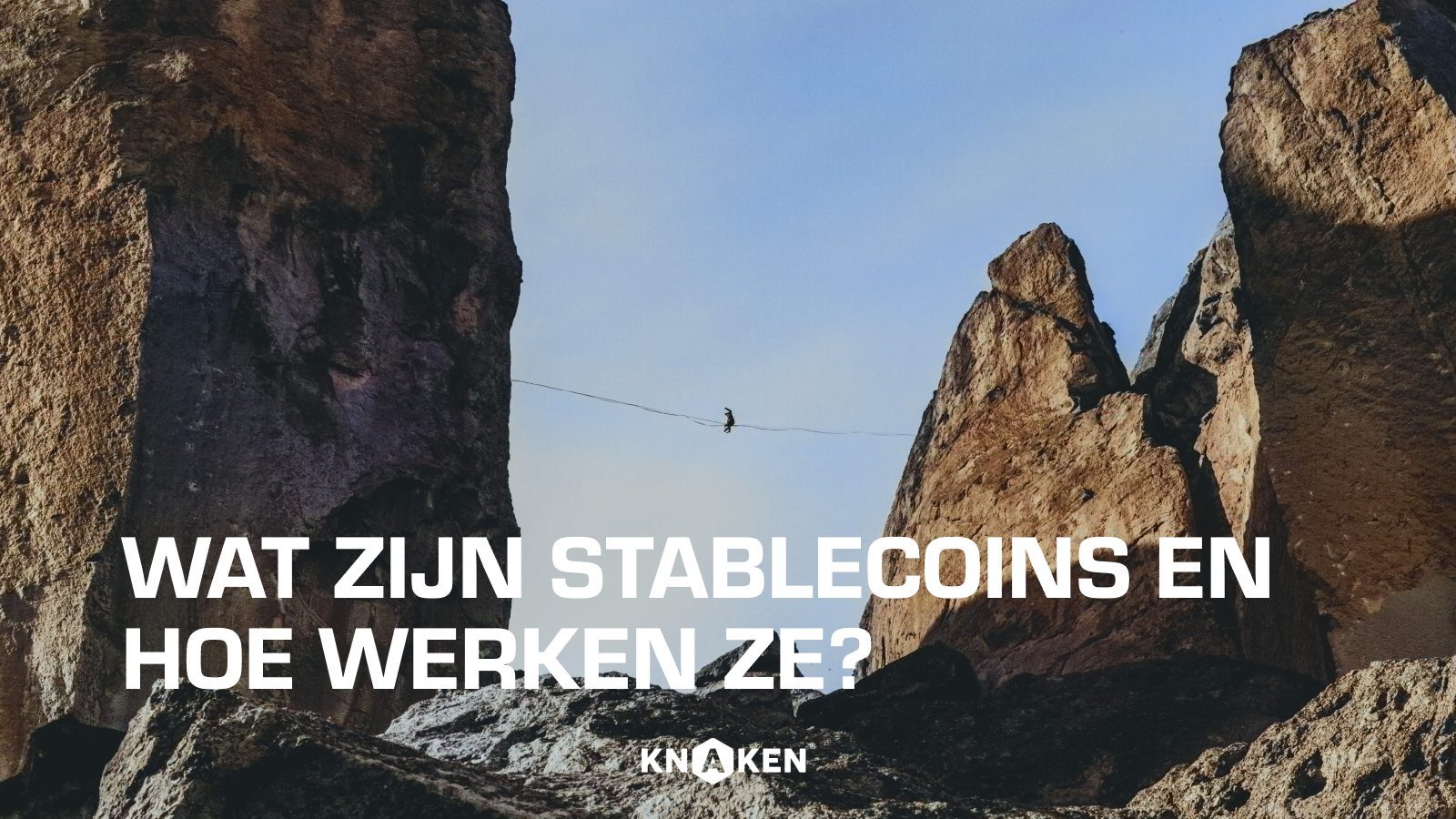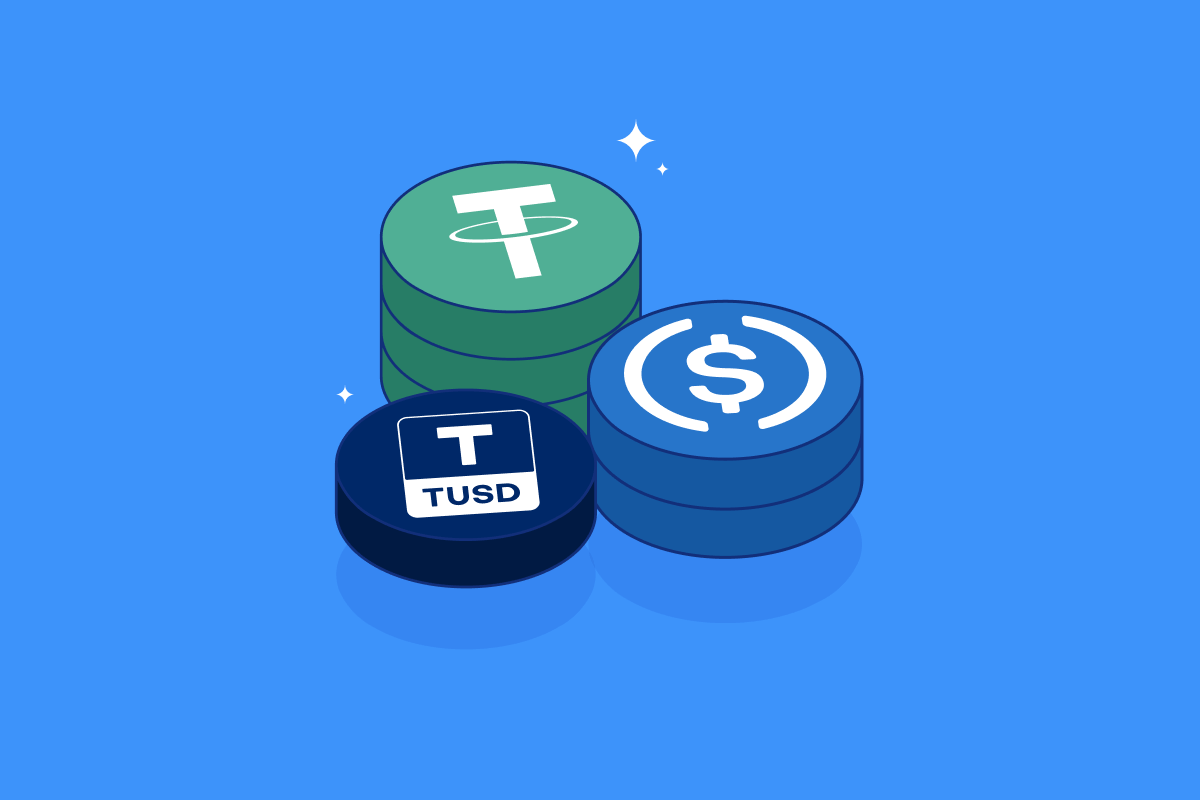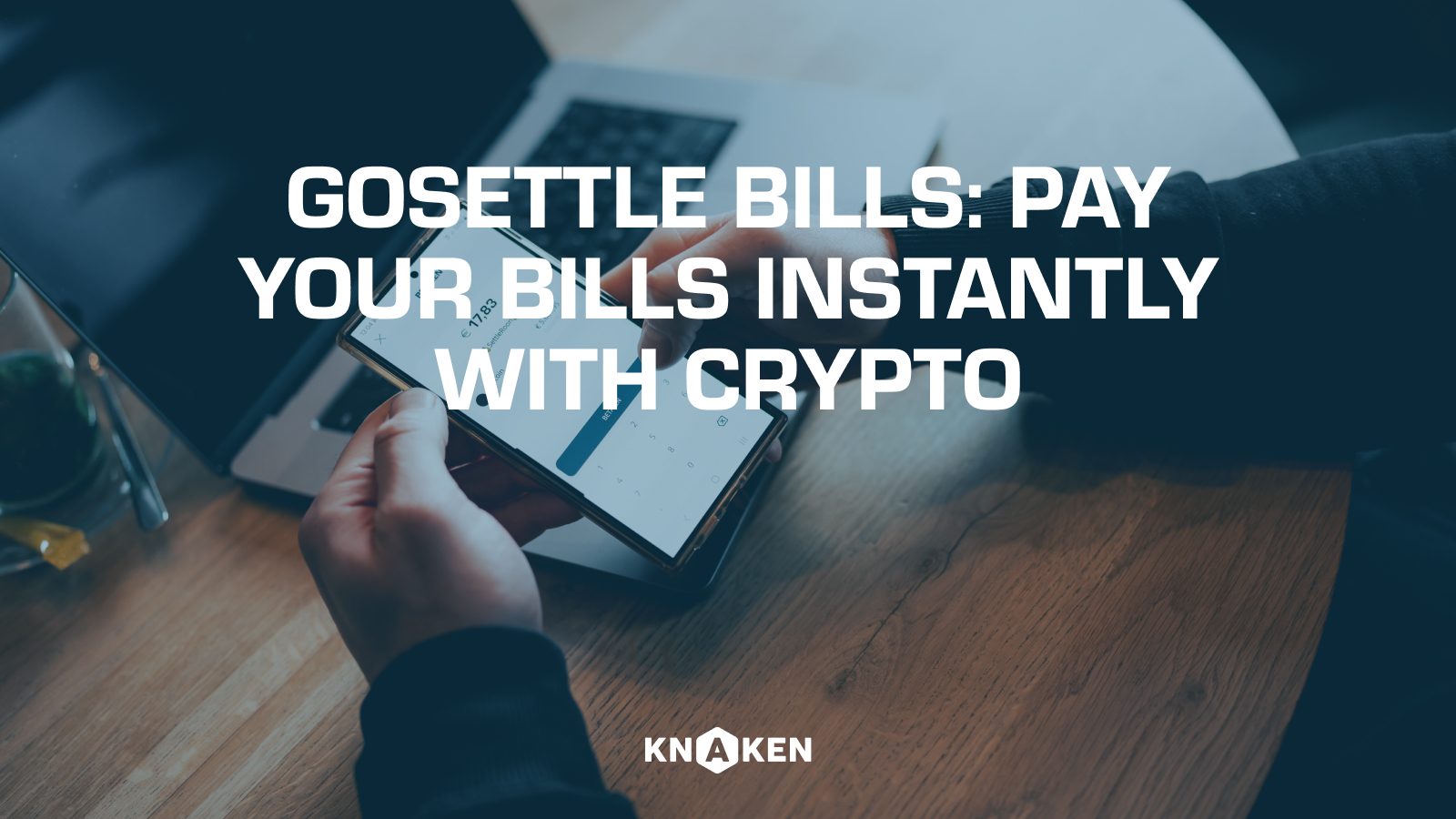

If you trade in crypto, you know that there are thousands of different cryptocurrencies. All these cryptocurrencies can be categorized in various ways. There are payment methods, DeFi tokens, metaverse tokens, and of course, stablecoins. The latter, stablecoins, are unique in their nature. The value of stablecoins is always equal to that of a fiat currency.
When you encounter such cryptocurrencies for the first time, you may wonder what their purpose is. You cannot earn a return on stablecoins by trading them. Nevertheless, stablecoins play an important role within the crypto space. Below we explain what stablecoins are and how these stable cryptocurrencies work.
What is a stablecoin?
A stablecoin is a digital currency, in the form of a cryptocurrency, that has a stable value. The value of this cryptocurrency is stable because it is linked to another financial product and is backed by collateral. In most cases, the value is tied to a fiat currency, such as the US dollar or euro.
It is important for a stablecoin to have its own collateral. Normally, the value of a cryptocurrency is determined by supply and demand. When demand increases relative to supply, the price will rise, creating more scarcity. If demand decreases relative to supply, the price will drop, because there is an oversupply in the market.
To avoid exposure to supply and demand fluctuations, there must be collateral in place. This collateral must equal the number of issued coins. If 10 million euro-stablecoins have been issued, then the developer of the stablecoin must keep assets worth equal value (10 million euros). If the value of the collateral is not equal to the number of issued coins, the value of the stablecoin can collapse.
Why are stablecoins needed?
When you hear about crypto, it often revolves around making money. Cryptocurrencies are extremely volatile, allowing for significant gains and losses. However, the world’s first cryptocurrency (Bitcoin) was developed as a means of payment.
A highly volatile currency is, however, anything but useful as a payment method. Neither the sending nor receiving party can rely on the stable value that the payment method has. If you receive 300 euros in crypto today, that value could easily drop by 10% tomorrow. Thus, it is virtually impossible to conduct business or make payments with such currencies.
Stablecoins, on the other hand, will always maintain their value, provided the stablecoin is securely developed. Each stablecoin operates in a different way. When the value is always equal to the US dollar or euro, it is easy to make payments with the stablecoin.
The stable value ensures that this type of cryptocurrency is very important for DeFi protocols and applications. Without stablecoins, DeFi could not operate properly.
What types of stablecoins are there?
Stablecoins operate in different ways. Therefore, there are various types of stablecoins. The biggest difference lies in how the stablecoins are backed. The collateral must ensure stability, but it can take many forms depending on the cryptocurrency.
Fiat-backed
The most commonly used and well-known stablecoins are backed by fiat money. This means that the managing party ensures that fiat money is held in a bank account or a vault. When demand for the stablecoin rises, more fiat money will be kept as well.It is also possible for the value of stablecoins to be backed by other cryptocurrencies. In this case, the value of the underlying cryptocurrencies must also equal the number of issued stablecoins. Because the value of cryptocurrencies fluctuates more strongly than that of fiat currencies, a special mechanism is used. This mechanism ensures that cryptocurrencies are automatically sold when necessary, and new cryptocurrencies are bought when the collateral needs to increase in value.
Commodity-backed
The value of a stablecoin is not always connected to a fiat currency. There are also stablecoins that tie their value to a commodity like gold or oil. These are products that hold significant value and can easily serve as collateral. In this case, it is also important that the managing party ensures that the value of the underlying commodities equals the number of issued stablecoins.
Regulation of stablecoins
Governments view stablecoins as a special currency and do not classify them as “ordinary cryptocurrency.” In many countries, stablecoins are therefore placed under strict supervision. Regulation is meant to ensure that stablecoins operate safely, protecting citizens from value losses.
When a company issues a stablecoin and claims that its value will always be equal, that company must ensure that it does not collapse in value.
Strict regulation for stablecoins is also coming within the European Union. In 2024, MiCa, which stands for Markets in Crypto Assets Regulation, will come into effect. This is new regulation for cryptocurrencies aimed at better protecting European citizens.
Most used stablecoins
Various companies and organizations have issued a stablecoin. In many cases, stablecoins can be traded on different blockchains, making them widely usable. Before using a particular stablecoin, it is advisable to research the security of the cryptocurrency.
Below is an overview of the most commonly used and important stablecoins at the moment:
Tether (USDT) is undoubtedly the most popular and widely used stablecoin. This coin, launched on Bitcoin’s blockchain in 2014, is now usable on various blockchains, including Ethereum, EOS, and Algorand.
USD Coin (USDC) is tied to the US dollar and was created by Circle and Coinbase. Although this coin was launched in 2018, you can trade the stablecoin on platforms like Solana, Ethereum, Binance Smart Chain, and 30 other blockchains.
Binance USD (BUSD) is the stablecoin that Binance launched in collaboration with Paxos on the Binance Chain. BUSD is pegged to the US dollar and available as an ERC20 and BEP2 token.
Dai (DAI) operates on the Ethereum blockchain and has its value pegged to the US dollar. The collateral is offered in the form of cryptocurrencies through the Maker Protocol and MakerDAO.
TerraUSD (UST) was the stablecoin that was pegged to the US dollar by the Terra protocol. In May 2022, however, this changed when a flood of UST entered the market. The value could not be stabilized, resulting in a complete collapse.
Conclusion
Stablecoins are cryptocurrencies whose value is always equal. In most cases, the value is linked to that of a fiat currency, such as the US dollar or euro. To maintain this value, collateral must be provided. This collateral must always equal the value of the number of issued stablecoins. Only in this way can the value of the stablecoin remain stable.
Collateral can be provided through fiat currency, commodities, or cryptocurrencies. It is especially important that there is enough collateral. In many cases, you can find on the stablecoin’s website how substantial the collateral is and how they maintain it. This way, you can determine if a stablecoin is secure enough.
However, things can also go wrong. TerraUSD lost its value in May 2022 when its peg to the US dollar was broken. Investors lost confidence and decided to sell their UST coins. Other popular stablecoins, such as Tether (USDT), USD Coin (USDC), Binance USD (BUSD), and Dai (DAI) still have a stable value linked to the US dollar.



Knaken Cryptohandel B.V. has applied for a MiCA license from the Netherlands Authority for the Financial Markets (AFM). This application is currently being assessed by the AFM.
Investing in crypto-related products involves significant risks.















